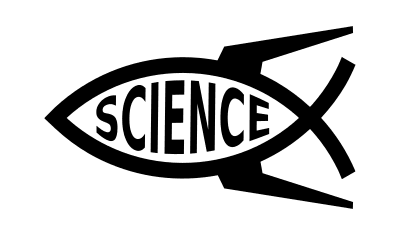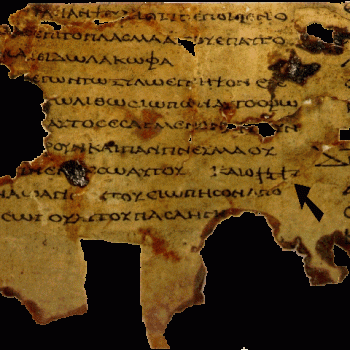Chapter 4 of my book (available for free online), Inspired!: 198 Supposed Biblical Contradictions Resolved. See the Introduction and ch. 1: How Do Atheists Define a “Biblical Contradiction”? All Bible passages RSV unless otherwise noted.
*****
- Genesis 1:1: “In the beginning God created the heavens and the earth” doesn’t assert that God created everything out of nothing (ex nihilo).
I submit that it is quite reasonable and straightforward to interpret this verse as describing creation of everything out of nothing. In any event, many passages in the Bible plainly assert creatio ex nihilo. Whenever it states that God made “all things” (Isa. 44:24; John 1:3; Rom. 11:36; 1 Cor. 8:6; Eph. 3:9; Col. 1:16; Rev. 4:11), that is everything out of nothing, since no “thing” came into existence without God. It follows that he created everything, (“without him was not anything made that was made”: John 1:3), and that this must be (logically) creation of all things out of nothing at all: creation from literally “no thing.” The Bible also proclaims that “By the word of the Lord [i.e., not by existing matter] the heavens were made” (Ps. 33:6). All of this is also (almost needless to say) perfectly consistent with the Big Bang theory: currently the consensus model among scientists, with regard to the origin of the universe.
- The “water” in Genesis 1:2 wasn’t created by God, but was material that he worked with to create.
Verse 2 cannot be taken in isolation apart from verse 1. It’s false to argue that this water wasn’t made by God because the Bible teaches that God made all things out of nothing (which would include the water on the early “formless” earth). Nothing in that notion precludes further “developmental” or evolutionary creation. At first the earth that he created from nothing as part of the universe was “without form and void”. Then God began to work with the initial chaotic form to make the earth as we know it. There is no logical necessity at all to interpret this as “water existed eternally” (a notion currently scientifically impossible to prove, based on what we know about matter as non-eternal) and God “created” from it. It’s ludicrous. Water was part of his creation of everything. Peter accurately sums all of this up: “by the word of God heavens existed long ago, and an earth formed out of water and by means of water” (2 Pet. 3:5). God made the initial formless earth that included water. Then he proceeded to further develop the earth as we know it.
- What did all the carnivores eat on Noah’s ark for an entire year (Gen. 7:11; 8:14-16)?
How have sailors — for millennia –, survived out at sea for months? They had salted pork and beef (which could last up to two years), stored in barrels. Also, dried food goes back to 12,000 B.C. Dried fish, such as cod, has a storage life of several years. That gives us at least two methods of preserving meat or fish, known to the ancients, that would easily sustain carnivores, just as dog and cat food (dried meat) do the trick today. Cats in particular must have meat, and they do quite well with dry cat food. Smoking or curing meat also goes back to ancient times. A favorite ration of the Egyptian army was smoked goose. Pickling was a fourth way of preserving meat, which is of ancient pedigree. For those who say in reply that the preserved foods above would not be sufficient for some, many, or all carnivores, there are several other options that would provide fresh meat. More animals could have been brought on the ark for the sole purpose of being slaughtered and fed to the carnivores. The biblical text doesn’t preclude that possibility. Fish could have been caught, or offspring slaughtered for food, or parents slaughtered after giving birth. Animals that breed at a very high rate (like rabbits or mice) could have been kept and bred. All of these things are clear and unarguable available options. The “difficulty” in this instance is how and why atheists who devise all these “Bible difficulties” couldn’t conceive of all these perfectly plausible options?
- The implication of the story of the paralytic that Jesus healed (Mark 2:2-12) is that physical affliction is a consequence of sin, and that, once sin is forgiven, the body can be repaired. The notion that suffering is one of the ways that God punishes us has seeped into Christian thinking.
Jesus simply said to the man, “My son, your sins are forgiven” (Mark 2:5b). He never said that his sins had caused his paralysis. In fact, the immediate context explains why he said that: because he “saw their faith” (2:5a; cf. Matt. 9:2; Luke 5:20). In other words, saying he was forgiven was due to Jesus’ knowledge and observation that he and his friends were faithful: which state brings about forgiveness (which has nothing to do with his or their physical condition). This ties into other similar sayings of Jesus when he healed. He is recorded in the Gospels saying no less than six times: “your faith has made you well” (Matt. 9:22; Mark 5:34; 10:52; Luke 8:48; 17:19; 18:42). As to sin being a reason for why this man was sick, or for anyone’s sickness, Jesus roundly refutes this notion elsewhere. Once, he was asked if a man’s sin or his parents’ sin caused his blindness. He replied: “It was not that this man sinned, or his parents, . . .” (John 9:3). In another instance, he denied that “these Galileans were worse sinners than all the other Galileans, because they suffered” (Luke 13:2). After asking a rhetorical question, he answered it with “No” (13:3). Then Jesus gave an example of “eighteen upon whom the tower in Siloam fell and killed them” (Luke 13:4). Again, he asked a rhetorical question and answered it in the negative: “do you think that they were worse offenders than all the others who dwelt in Jerusalem? I tell you, No; . . .” (13:4-5). In other words, physical affliction is not everywhere and always a result of sin. That’s not Jesus’ teaching, and it’s not biblical teaching. The book of Job had already resolved that matter long since. God describes Job: “there is none like him on the earth, a blameless and upright man, who fears God and turns away from evil” (Job 1:8; cf. 2:3). Yet the entire book is about his extreme sufferings.
- Mark 8:10 refers to the “the district of Dalmanutha.” As far as is known, there was no such place in Galilee.
Commentators freely admit that there is little known about this place-name from Mark, but that’s not proof that such a town never existed. Many biblical places or items previously mysterious have been illuminated by scores of archaeological findings. Matthew 15:39, the parallel verse, gives us our only biblical geographical clue: “he got into the boat and went to the region of Magadan.” That provides at least something to work with and from. Magadan is an alternate name for Magdala: where Mary Magdalene was from. This town is known to have been located on the western shore of the Sea of Galilee: between biblical Capernaum and Tiberias. It so happens that archaeologists (as reported in September 2013) have indeed found an ancient town that fits the bill, and might be Dalmanutha: since it was about 500 feet from Magdala. If Matthew can be trusted, and Dalmanutha was in “the region of Magadan” then this could very well be Dalmanutha. Mark (like Matthew) reports that Jesus departed a town after feeding the 4,000 and “getting into the boat again he departed to the other side” [of the Sea of Galilee] (Mark 8:13). There is evidence that the place where this feeding occurred was near the archaeological site of Kursi, on the eastern shore of the Sea of Galilee. If so, it is almost directly across from Magdala and what may be Dalmanutha.
- It’s believed that Jesus’ crucifixion took place in Nisan, and Mark 11:8 asserts that “others spread leafy branches”: referring to the events that Christians now celebrate as Palm Sunday, but how can this be, since there are no leafy branches in March (Nisan) in Jerusalem?
The Mount of Olives was where Jesus was (Matt. 21:1; Mark 11:1) before His entry into Jerusalem (Matt. 21:10; Mark 11:11; John 12:12), and of course it has a lot of olive trees. At the base of it is also the Garden of Gethsemane: with many old olive trees, and they have leaves in March or April, as “evergreen” tropical trees. Since Mark didn’t specify which tree he was referring to, one can reasonably opine that it is the olive tree, since everything matches up perfectly. Nehemiah 8:15 is similar: “. . . “Go out to the hills and bring branches of olive, wild olive, myrtle, palm, and other leafy trees to make booths, . . .” The word for “branches” in both KJV and RSV for Matthew 21:8 is klados. In Jeremiah 11:16 in the Greek Septuagint it’s used for “branches” of an “olive tree.” Zechariah 4:12 has “branches” of “olive trees.” In Romans 11:16-19, 21 (five usages) it refers again to an olive tree (see 11:17, 24). Both Matthew and Mark could be referring to olive leaves or possibly mustard leaves. Olive trees, however, were a lot more common in Israel (mentioned in the Hebrew Bible 46 times), whereas mustard trees receive zero mentions in the Hebrew Bible and only five references in the New Testament.
John 12:13 specifically mentions “branches of palm trees” in connection with the first “Palm Sunday.” Date palms grew in Jericho, which is 3,280 feet lower in elevation than Jerusalem, and only 25 miles east. Jericho is called the “city of palms” in Deuteronomy 34:3 and 2 Chronicles 28:13. They can survive all the way down to 20 degrees Fahrenheit, and the leaves are ten to twenty feet long (the average is about 13 feet) and do not shed. Date palms easily survive in Jericho all year-round, based on temperature data and averages. The mean minimum never dips below 43 degrees Fahrenheit in January or February or below 47 in December, while the mean maximum temperatures for those months are 53-58 degrees. The most likely scenario is that the crowds hailing Jesus had both olive leaves and palm tree “branches” or leaves. The texts do not contradict each other. Luke doesn’t mention the people having leaves, but it’s not required that he do so to avoid a “contradiction.” He doesn’t deny it.
*****
*
Photo Credit: worker (1-23-18) [public domain / Openclipart]
Summary: Ch. 4 of Dave Armstrong’s book, “Inspired!”: in which he examines 198 examples of alleged biblical contradictions & disproves all of these patently false claims.














